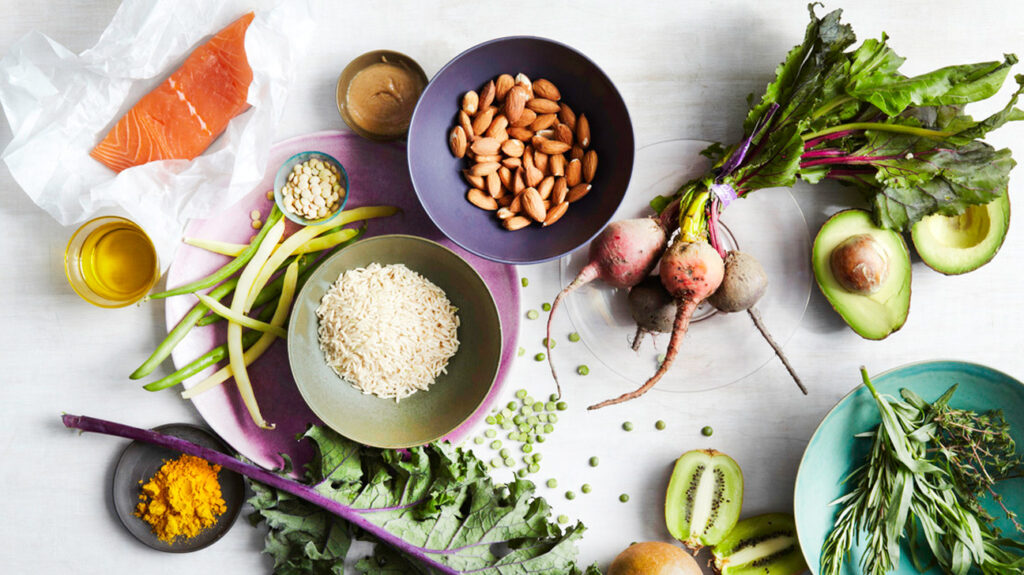You can’t pick up a newspaper these days without reading about all the stuff you SHOULDN’T be feeding your kids (or yourself, for that matter). High fructose corn syrup, saturated fats, trans fats, processed anything…Stay as natural as possible, right? With lovely, innocuous things like soy, chicken soup, and for goodness’ sake, milk right? Uh, not so much. Even seemingly blameless foods and ingredients can be poisonous to those nearest and dearest to you.
Soy May Increase Risk of Breast CancerSoy May Increase Risk of Breast Cancer
Soy
In recent years, soy has been getting more press than Paris Hilton’s nose job or Britney Spears’ plastic surgery combined. Soy is touted as a ‘near perfect’ food, with supporters claiming it can provide an ideal source of protein, lower cholesterol, protect against cancer and heart disease, reduce menopause symptoms, and prevent osteoporosis, among other things.
However, Dr. Joseph Mercola, author of “Take Control Of Your Health” says numerous studies have found that soy products may increase the risk of breast cancer in women, abnormalities in infants, contribute to thyroid disorders and weaken the immune system. Perhaps the most disturbing of soy’s ill effects on health has to do with its phytoestrogens that can mimic the effects of the female hormone estrogen. These phytoestrogens have been found to have adverse effects on various human tissues, and drinking even two glasses of soymilk daily for one month has enough of the chemical to alter a woman’s menstrual cycle. Soy is particularly problematic for infants, and Mercola recommends that soy infant formulas should be avoided. Mercola says it’s been estimated that infants who are fed soy formula exclusively receive the equivalent of five birth control pills worth of estrogen every day.
Dried Apricots high in SulfitesDried Apricots high in Sulfites
Dried Apricots
You certainly don’t want to be stuffing candy down their pie hole, but how about some sweet and natural dried fruit? Maybe not. Dried fruit is probably the biggest source of sulfites in the form of sulfur dioxide your children will ever meet.
The FDA has estimated that 1 in 100 individuals in the United States is sensitive to sulfites and that up to 5% of these people are sulfite allergic. Reactions can range from mild rashes, headaches, and cramping to life-threatening reactions such as anaphylactic shock. People with asthma, previous allergies, or a deficiency of the liver enzyme sulfite oxidase react the most to sulfites. Asthmatics are especially susceptible and should carry their inhalers with them when dining outside the home. In 1999, the World Health Organization (WHO) warned that up to 20 to 30 percent of childhood asthmatics may be sensitive to sulfite preservatives, and recommended that the use of sulfite preservatives should be reduced or phased out wherever possible.
Maybe you don’t have any kids with asthma, but you know about sulfites from wine? Just so you know, on average, 2 ounces of dried apricots have ten times the sulfites as one glass of wine. So lay off the dried apricots already.
Chicken Soup Should Come From Chicken, Not CanChicken Soup Should Come From Chicken, Not Can
My grandmother always said “it couldn’t hurt,” but she wasn’t talking about the chicken soup you get from a can. Those sick-day stalwarts like Campbell’s Chicken Noodle Soup contain about 890 mg of sodium per 8 oz prepared serving. Most health organizations recommend we ingest no more than around 1500 mg of sodium a day. And that’s for adults. Just two bowls of soup alone exceeds that limit – never mind the bologna sandwiches and corn chips. Granny had it right all along – chicken soup should come from a chicken, not a can.
Milk pasteurization destroys enzymes, diminishes vitamin contentMilk pasteurization destroys enzymes, diminishes vitamin content
Milk
Milk straight from the cow is one of the healthiest foods available. The problem is that’s not the way we drink it these days. According to Sally Fallon, a “real food” activist, and frequent challenger of politically correct nutrition, pasteurization destroys enzymes, diminishes vitamin content, denatures fragile milk proteins, destroys vitamin B12 and vitamin B6, kills beneficial bacteria, promotes pathogens, and is associated with allergies, increased tooth decay, colic in infants, growth problems in children, osteoporosis, arthritis, heart disease, and cancer. Fallon says (and I’m disturbed to learn) that calves fed pasteurized milk die before maturity, and inspection of dairy herds for disease is not required for pasteurized milk.
It’s not available at your local Piggly Wiggly, but Fallon says the ideal solution is to drink “real milk” which is produced from cows that feed on real grass or other vegetation, not soy meal, bakery waste, chicken manure, or citrus peel cake, laced with pesticides. Real milk also contains lots of good butterfat, rich in short- and medium-chain fatty acids, which protect against disease and stimulate the immune system. Butterfat also contains “glyco-sphingolipids” which prevent intestinal distress and “conjugated linoleic acid” which has strong anti-cancer properties. It is possible to find real milk in your area, but you have to be willing to drive.
The real poison in some turkey franks is sodium nitrite real poison in some turkey franks is sodium nitrite

Turkey Franks
The baby boomer generation grew up on frankfurters – mostly made of beef. But with so much concern about red meat, lots of little kids are now gobbling up turkey franks. Are their moms doing them a favor? Not really. Oscar Mayer turkey franks contain 510 mg of sodium in each serving and about 80% of the calories come from fat. But the real poison in turkey franks is sodium nitrite. Common, to most processed meats, sodium nitrite is used as a preservative and helps keep them that nice, fresh red color.
But sodium Nitrite is actually highly carcinogenic once it enters the human digestive system. There, it forms a variety of nitrosamine compounds that enter the bloodstream and wreak havoc with a number of internal organs: the liver and pancreas in particular. It is widely regarded as a toxic ingredient, and the USDA actually tried to ban sodium nitrite in the 1970s but was vetoed by food manufacturers who complained they had no alternative for preserving packaged meat products. You can counteract the negative effects by consuming fairly large doses of vitamins C and E before you consume anything with sodium nitrite. Or you can just give the Oscar Mayer wiener mobile a miss altogether.
Wheaties
Lots of little boys and girls dream of becoming famous athletes and having their pictures on the Wheaties box. And if they don’t eat many bowls of the stuff, they just might live long enough. Yes, there’s wheat in Wheaties, but other than preservatives, the only other ingredients are sugar, salt, and corn syrup. Oh – the preservative. Did I mention it’s toxic, and banned for use in food in Japan, Romania, Sweden, and Australia? But not here. BHT (butylated hydroxytoluene) is a suspected toxicant for the gastrointestinal system or liver, kidneys, nerves, respiratory system, and skin or sense organs. It’s been banned in the US for baby foods, but as soon as junior gets into solids, you can feed him his Wheaties.
Fruit Juice May Lead to Obesity Fruit Juice May Lead to Obesity
Grape Juice
Lately grape juice has been touted for the anti-oxidant properties it shares with its grown-up incarnation, wine. While that may be true, don’t think that slurping a glass of Welch’s every day is all good. Yes, an 8-ounce glass is 100% juice, but it contains 40 grams of sugar! That’s more than Dr. Pepper or Coke. In fact, many fruit juices are more like liquid candy than liquid fruit. Ocean Spray Cran-Apple has 35 grams of sugar in an 8 oz serving (also more than Pepsi) and the ingredient list starts with filtered water, then high fructose corn syrup, and THEN juice.
And a word about high fructose corn syrup. While the research isn’t yet 100% conclusive, many nutrition experts blame the increased consumption of high-fructose corn syrup for the growing obesity problem. One theory is that fructose is more readily converted to fat by your liver than is sucrose, increasing the levels of fat in your bloodstream. According to Mayo Clinic dietitian Katherine Zeratsky,
animal studies have shown a link between increased consumption of high-fructose corn syrup and adverse health effects, such as diabetes and high cholesterol. If you want fruit in your diet, eat it, don’t drink it.
Yoplait Yogurt Yoplait Yogurt
Yogurt
Apparently, crusty old farmers in Romania or somewhere live to be 246 years old because they eat so much yogurt. Yogurt puts “good” bacteria into the digestive tract and provides calcium and protein. It may help prevent osteoporosis (in the crusty farmer’s wife) and may reduce high blood pressure. But I’m quite certain the crusty old farmers were not eating Yoplait. Forget the fact that it also contains cornstarch and gelatin (not generally found in milk – or am I missing something?), Yoplait contains a whopping 27 grams of sugar in an 8-ounce carton. At the risk of beating a dead horse (cow?), that’s the same amount of sugar as an 8 oz serving of Coke. If you’re going to eat yogurt for your health, eat it plain – or sweeten with honey, if you must. (My own personal recommendation is Fage Total Greek Yogurt. The flavor is wonderfully mild and it’s just milk and active cultures).
Soda linked to Heart Disease Soda Linked to Heart Disease
Soda Pop
It’s a part of our American heritage – whether it’s Coca-Cola, Pepsi, Dr. Pepper, or good ol’ root beer. But it’s all evil. And don’t think switching to a diet will redeem you by eliminating all that sugar. New research shows that drinking more than one soft drink daily – whether it’s regular or diet – may be associated with an increase in risk factors leading to heart disease. In the study, those who consumed one or more soft drinks a day had a 48 percent increase in “metabolic syndrome” a cluster of cardiovascular disease and diabetes risk factors including excess waist circumference, high blood pressure, bad cholesterol levels, and high fasting glucose. The presence of three or more of these factors increases the risk of developing heart disease.
Caramel Colored Foods
And there’s more bad news about “brown” sodas: the caramel coloring that makes them brown. Basically made from burnt sugar, caramel coloring shows up in sodas, bread, gravies, and even in pet food. Scientists have actually used caramel coloring in lab experiments on mice to interfere with white blood cell production. In other words, caramel coloring suppresses the immune system. Do you need another reason to lay off the “real thing?”
Wheat Bread may Cause Headaches and Developmental Delays in ChildrenWheat Bread may Cause Headaches and Developmental Delays in Children
Wheat Bread I know, I know! All we’ve been hearing lately is that white bread is worthless nutritionally. Even the American Academy of Pediatrics says that “whole-wheat bread offers a nutritional advantage over white bread.”
While this may be true to some extent, Dr. Mercola says wheat bread should not be considered a healthy or necessary part of the diet. Wheat is often contaminated with mycotoxins and no matter what the form, whether it’s wheat, whole, cracked, or sprouted, they will all be capable of causing the same problems including headaches, developmental delays in children, and irritable bowel syndrome. Mercola says, unless you are seriously underweight, most of us would be best served by limiting or avoiding wheat altogether.” But what do you make the peanut butter sandwiches with? Bananas, I guess.
The bottom line is, you really can’t trust any packaged food, can you? Unless you can see exactly how it was raised or grown and how it arrived at your table, you can’t be certain it hasn’t been adulterated in one way or another. My advice: grow your own – or buy from someone who does. In general, the closer it is to the way it came from the earth, the better off you and your kids are.




